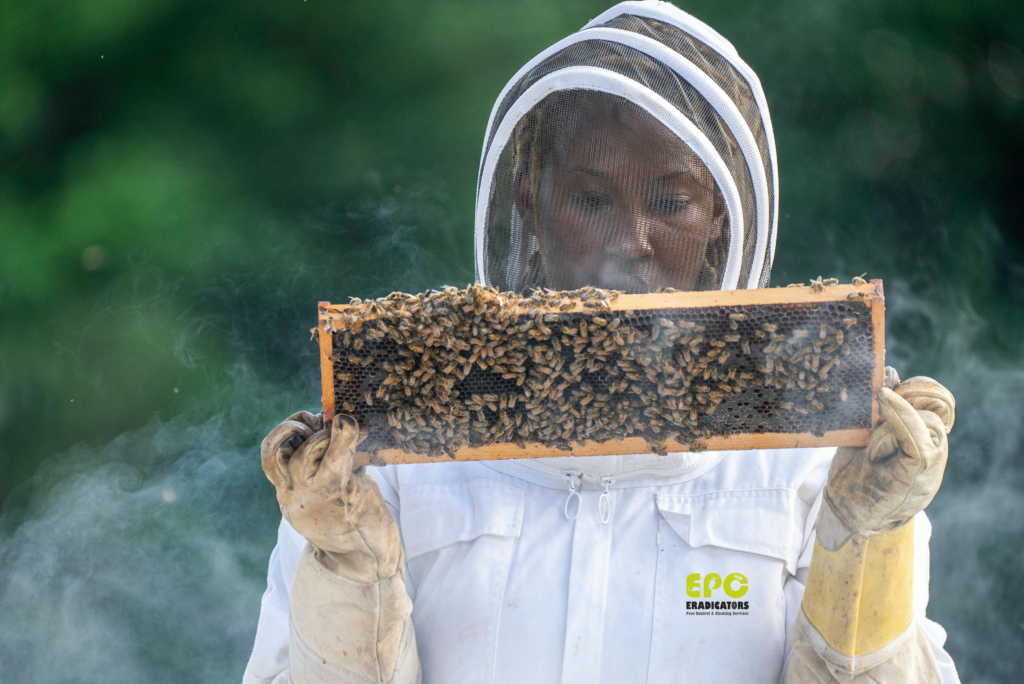
🐝💢 Wasps & Bees Pest Control in Dubai
Are wasps or bees building nests near your home or workplace? Don’t risk dangerous stings or allergic reactions. At Eradicators Pest Control, we specialize in Wasps & Bees Pest Control in Dubai, offering fast, eco-friendly, and safe nest removal services across the UAE.
⚠️ Why Are Wasps & Bees a Threat?
Wasps and bees are common flying insects in Dubai, but their presence can quickly escalate into a serious issue. Their stings can cause swelling, allergic reactions, or even anaphylactic shock.
🐝 Common Bee & Wasp Species in Dubai
🐝 Bee Species:
-
Honey Bees – Often found in tree hollows, wall cavities, or roof voids.
-
Bumble Bees – Prefer underground burrows and garden sheds.
-
Carpenter Bees – Can burrow into wood, weakening structures.
⚫ Wasp Species:
-
Paper Wasps – Build umbrella-shaped nests under eaves.
-
Yellow Jackets – Highly aggressive, usually nesting underground.
-
Hornets – Large wasps that form football-shaped nests in trees.
-
Mud Daubers – Solitary and non-aggressive but often invade structures.
✅ Quick Tip: Unlike bees, wasps can sting multiple times.
🩹 How to Handle Bee & Wasp Stings
-
Remove bee stingers immediately with a scraping motion (not tweezers).
-
Clean the area and apply a cold compress to reduce swelling.
-
If you experience shortness of breath or dizziness, seek emergency care.
🛠️ Our Safe Wasps & Bees Nest Removal Process
1️⃣ Inspection: We identify the insect type and locate the nest — walls, roofs, attics, or gardens.
2️⃣ Containment: Our certified team uses protective gear and eco-safe methods to neutralize threats.
3️⃣ Removal: We carefully remove the nest and apply repellents or exclusion methods to prevent re-entry.
❌ Do not try to remove nests yourself. Swarms can be extremely dangerous when agitated.
📞 Why Trust Eradicators for Wasps & Bees Pest Control?
✅ Dubai Municipality-approved professionals
✅ Eco-friendly insecticides safe for pets and children
✅ Same-day emergency nest removal
✅ Available in Dubai, Abu Dhabi, Sharjah, and Ras Al Khaimah
✅ Experienced in both residential and commercial pest control
🧠 FAQs – Wasps vs Bees
🟡 What’s the difference between a bee and a wasp?
Wasps are more aggressive and can sting multiple times. Bees are pollinators and die after stinging.
🐝 Bee or wasp in your garden?
Check for nesting behavior. Bees often swarm in spring. Wasps hover around food or garbage.
⚖️ Bee and Wasp Removal Services Near Me?
We offer bee and wasp removal services all over the UAE — just call Eradicators for help.
